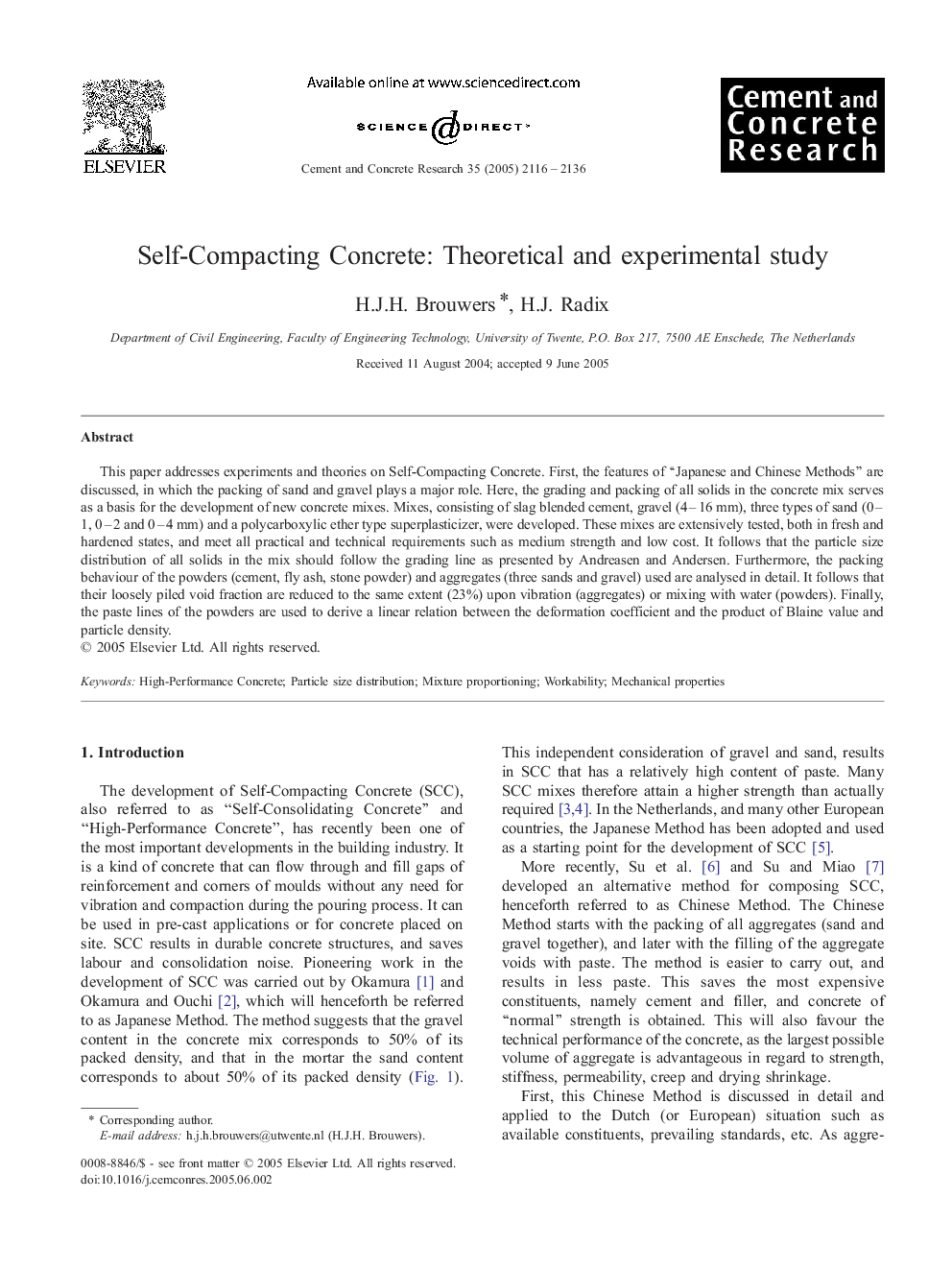| Article ID | Journal | Published Year | Pages | File Type |
|---|---|---|---|---|
| 1458140 | Cement and Concrete Research | 2005 | 21 Pages |
This paper addresses experiments and theories on Self-Compacting Concrete. First, the features of “Japanese and Chinese Methods” are discussed, in which the packing of sand and gravel plays a major role. Here, the grading and packing of all solids in the concrete mix serves as a basis for the development of new concrete mixes. Mixes, consisting of slag blended cement, gravel (4–16 mm), three types of sand (0–1, 0–2 and 0–4 mm) and a polycarboxylic ether type superplasticizer, were developed. These mixes are extensively tested, both in fresh and hardened states, and meet all practical and technical requirements such as medium strength and low cost. It follows that the particle size distribution of all solids in the mix should follow the grading line as presented by Andreasen and Andersen. Furthermore, the packing behaviour of the powders (cement, fly ash, stone powder) and aggregates (three sands and gravel) used are analysed in detail. It follows that their loosely piled void fraction are reduced to the same extent (23%) upon vibration (aggregates) or mixing with water (powders). Finally, the paste lines of the powders are used to derive a linear relation between the deformation coefficient and the product of Blaine value and particle density.
